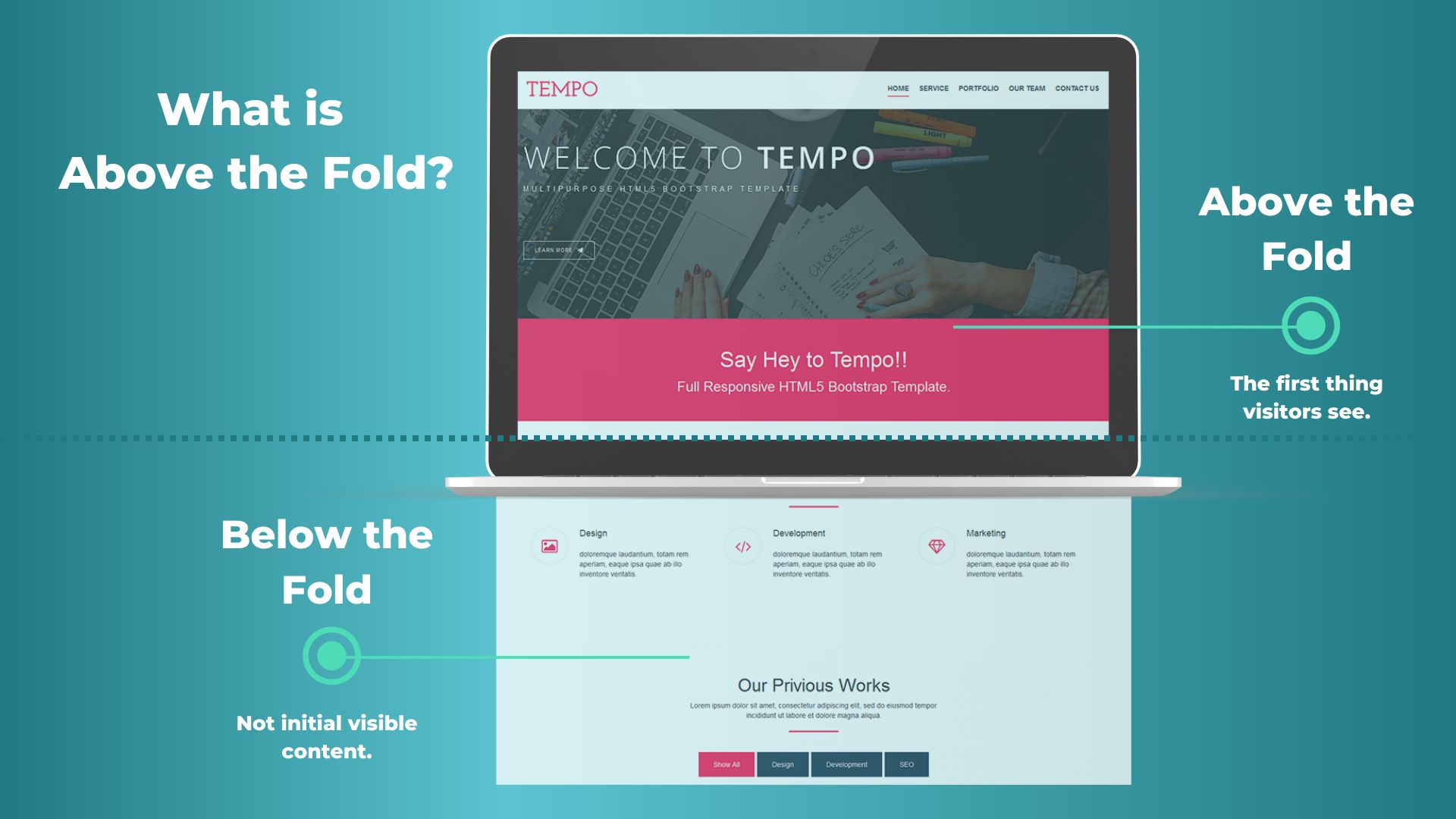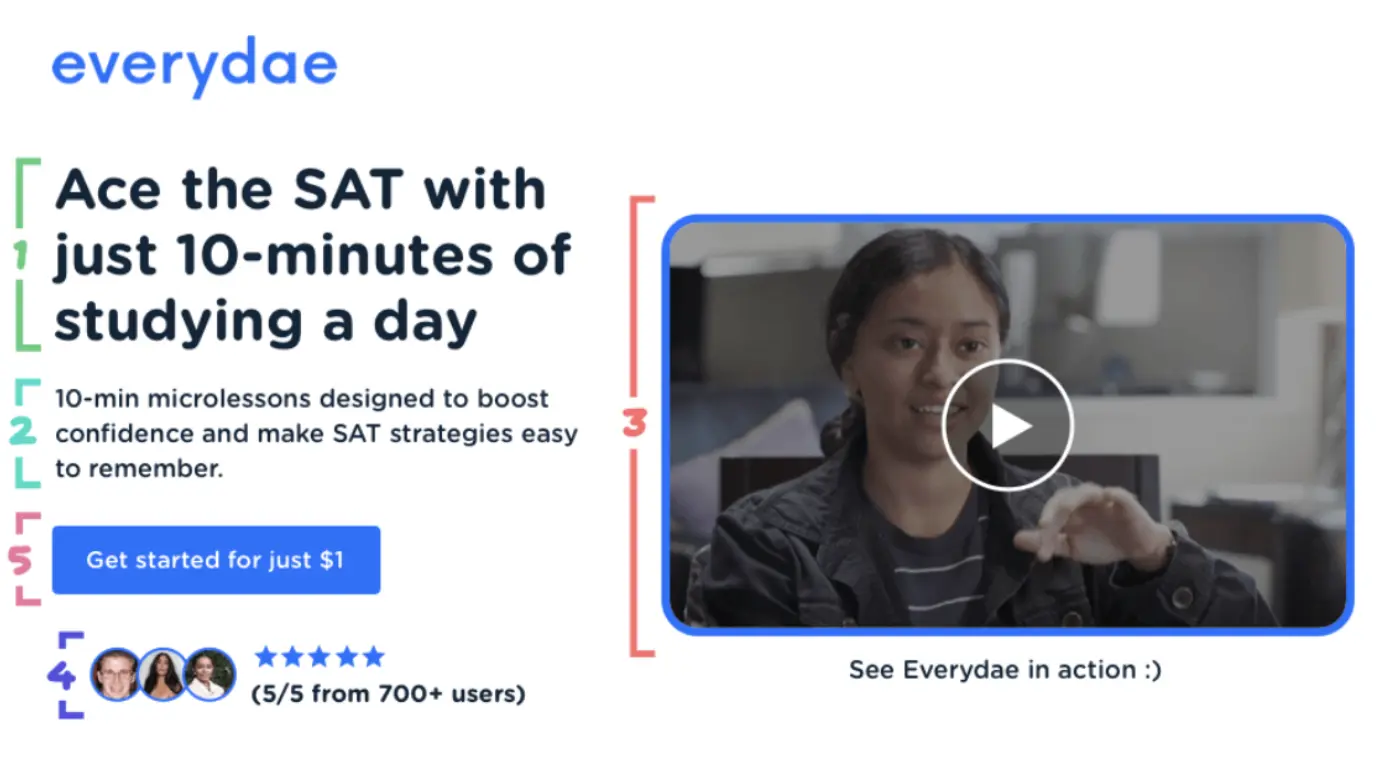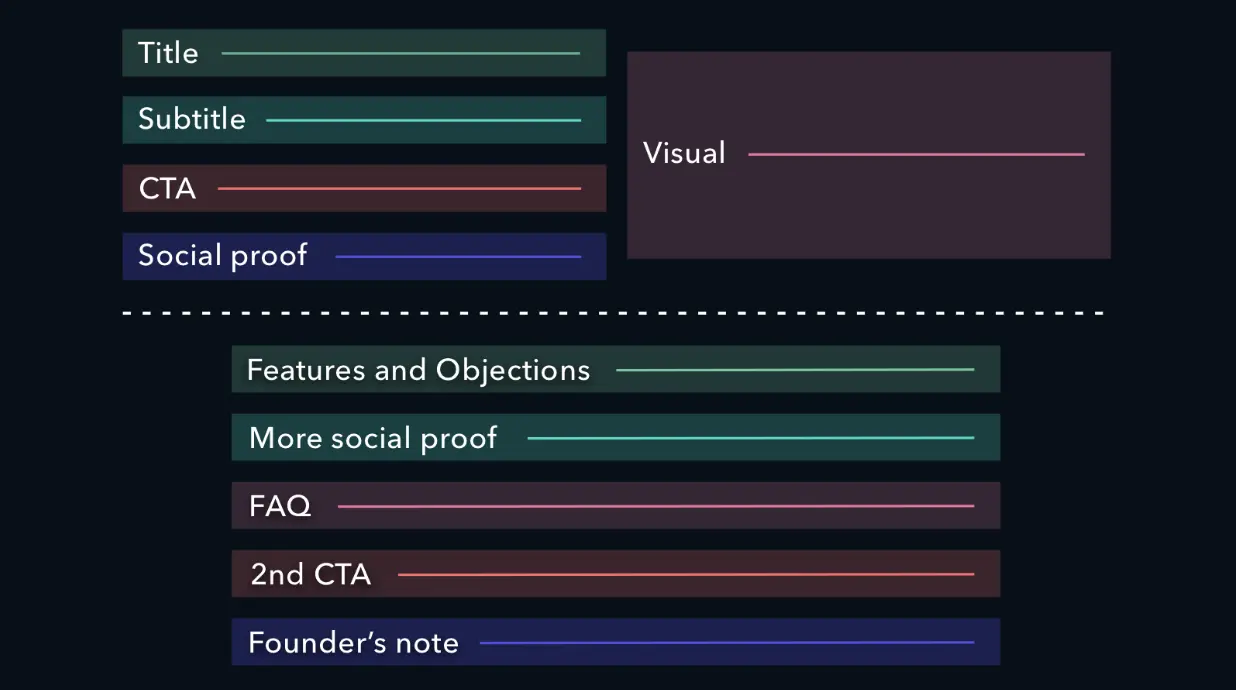- Published on
Structuring Effective Landing Pages
- Authors

- Name
- Vaut
- @V_aut_
Your Digital Storefront
Landing pages are the digital storefront of your business. They can make or break your sale. Here is a concise breakdown of how to structure a landing page that effectively drives the user to perform your desired action.
There are two main parts to a landing page. Above the fold, and below the fold.

Above the Fold
Above the fold is the part of the page that is visible on initial loading without the need to scroll - also called the hero section. This part is meant to capture the attention of the user and keep them scrolling and should have the following components:
1. Header
Hooks the attention of the reader by communicating the value proposition in a concise and engaging way. This is where you want to establish emotional buy-in.
2. Subheader
Provides back up for the hook by further elaborating on the value proposition with a logical argument. It lays out how the product creates value.
3. Visual
A realistic visualization of the product - ideally used in action. Images are a great way to engage and videos can be even better.
4. Social Proof
Grants the offering credibility through verification by third parties such as reviews, testimonials and logos of clients.
5. Call to Action

Below the Fold
6. Features, Benefits and Objections
Dive deeper into the value you create above the fold. Show off your features and make sure to communicate the benefits they provide clearly. Also, take a first stab at addressing your customers biggest potential objections.
7. Inspire Action
Use additional social proof to encourage the user to follow your call to action. In contrast to the social proof used above the fold to establish credibility, this section is meant to bring life to your product with real examples that sell your offer.
8. FAQ
Address all features and objections that you weren't able to cover above. This is the most heavily informational section.
9. 2nd Call to Action
A second opportunity to incentivize your user to conversion without the space restrictions above the fold.
10. Founder's Note
Your opportunity to directly talk to the customer. Make it count! Tell them a story that empathizes, describes their problem, takes ownership and paints a desirable future.

Putting these 10 component together will allow you to write a landing page that converts.
This post was inspired by MarketingExamples.com.